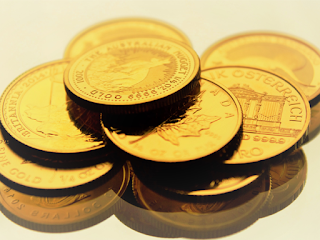Gold has seen colossal momentum so far this year, enabling the metal to pick up generally 20% since January
Gold has enjoyed
tremendous momentum so far this year, allowing the metal to gain roughly 20%
since January. The strength of its drivers became especially prominent this
summer, when gold climbed above six-year highs during what is normally its
weakest quarter.
Although gold
continues to make moves above $1,530 an ounce and many analysts have upgraded
their near-term forecast to $1,600 an ounce, a MarketWatch article reports others
are seeing $2,000 as a more realistic level in gold's immediate future.
In a recent
publication, Brien Lundin, editor of Gold Newsletter, drew a line between what
he sees as short- and long-term factors powering gold's remarkable run. The
former category includes the now-infamous U.S.-China trade war, whose ongoing
escalation has sparked fears that the dispute will bear a heavy toll on the
global economy, sending investors flocking towards safe-havens.
According to
MarketWatch, other short-term boosters include renewed threats of a recession
occurring in the U.S., which were present throughout the Federal Reserve's
hiking schedule but came to special prominence due to the recent inversion of
the yield curve in both the 2-year and 10-year Treasuries. The likelihood of
successive rate cuts by the Fed and persistent weakness in global economic data
reports have also played their role as gold's near-term tailwinds. Deric Scott,
vice president and senior analyst at precious-metals retailer Metals.com, has
also pointed to conflict in Hong Kong and Iran as two events that have been
pushing investors towards safety.
Yet both Lundin and
Stan Bharti, chief executive officer of private merchant bank Forbes &
Manhattan, believe that there is a much stronger force driving gold's prices,
which will ultimately result in gold surpassing its all-time highs. In the MarketWatch article, Bharti notes the
last 8-10 years have seen investors jump onto the bullish bandwagon in the
stock market in a low-interest environment. Yet Bharti thinks that this era is
drawing to a close, and that inflationary concerns will once again drive
investors back to hard assets.
Lundin also sees the
likeliness of heightened inflation as a key element to higher gold prices, as
gold has historically acted as the premier hedge against depreciating
currencies. The analyst thinks that any indication of quantitative easing (QE)
in the U.S. would send gold soaring. Recently, both the Fed and the European
Central Bank have hinted towards looser monetary policies in the near future,
including a possible return to QE programs.
Over the short-term,
Bharti sees gold jumping from its current levels to reach $1,600 in the next
quarter. By the end of next year, the CEO expects gold prices to climb above
$2,000 an ounce. Lundin echoed Bharti's sentiment, stating that gold's climb to
$1,800 or $2,000 is a near-certainty over a longer stretch of time.


